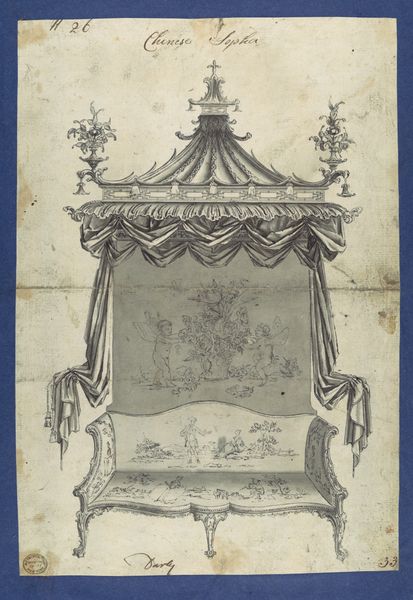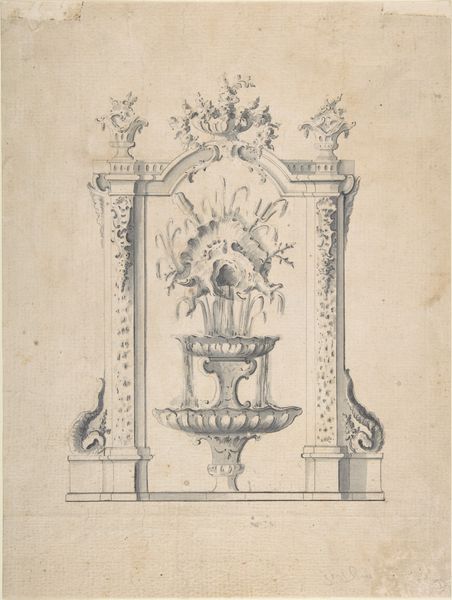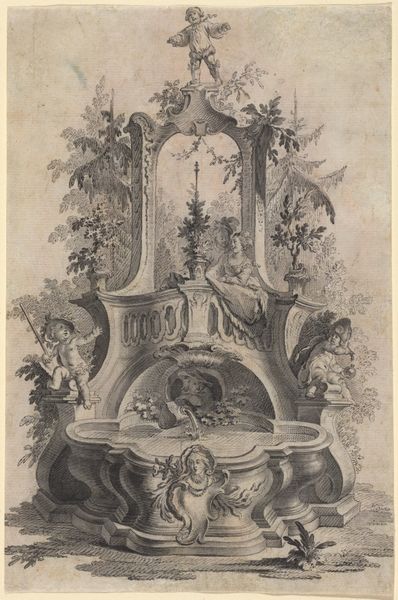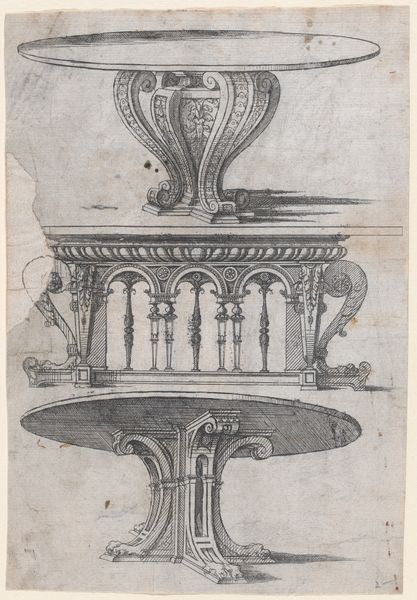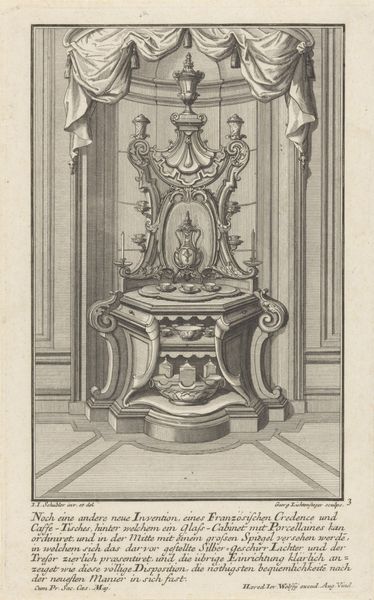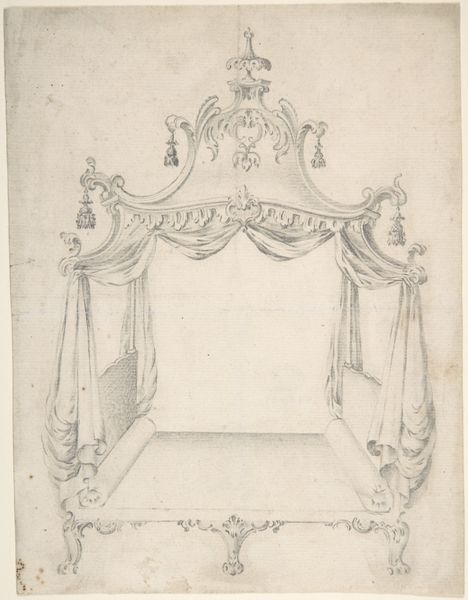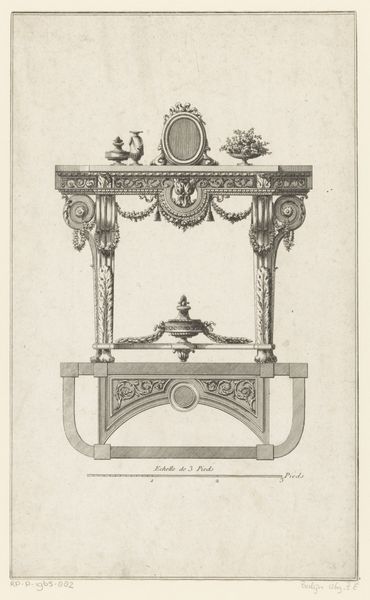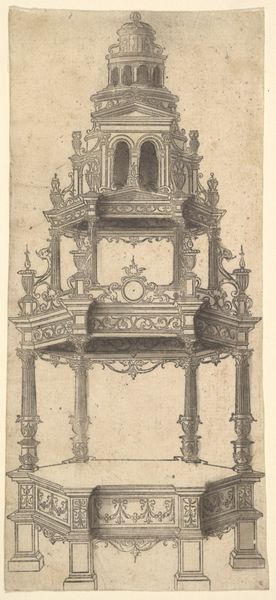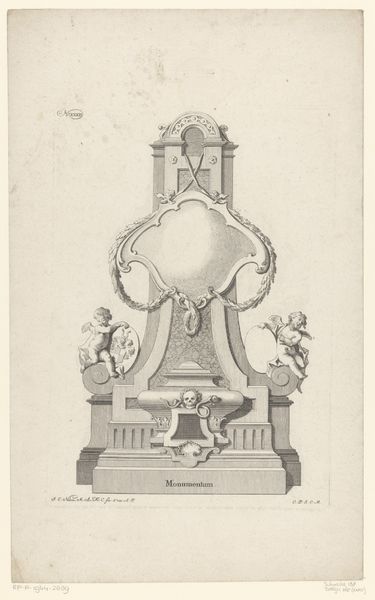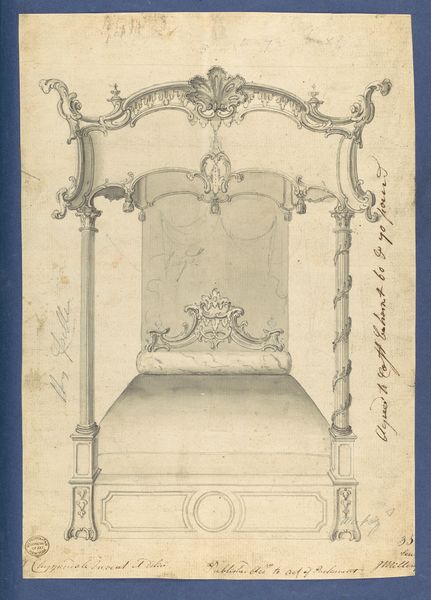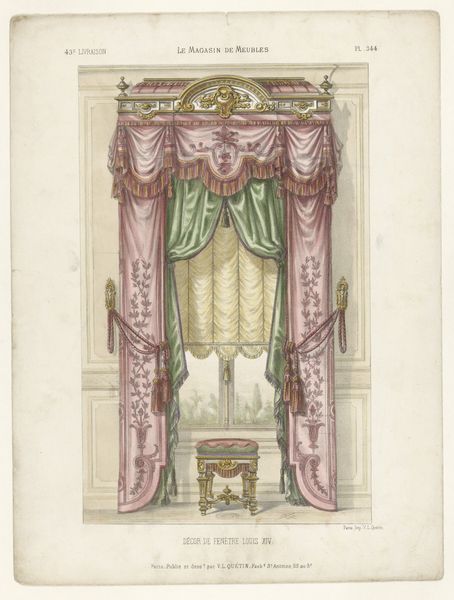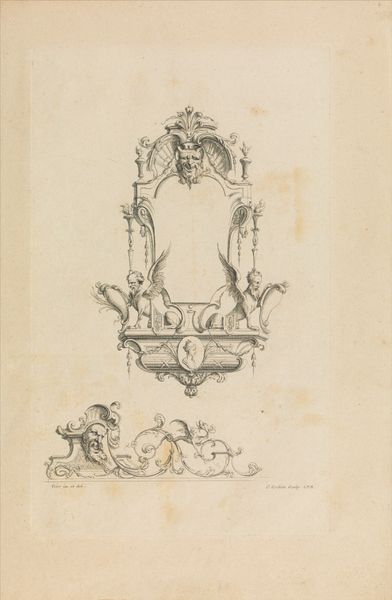
Toilet Table, from Chippendale Drawings, Vol. II 1760
drawing, coloured-pencil, print, pendant
drawing
coloured-pencil
furniture
coloured pencil
decorative-art
rococo
pendant
Dimensions: sheet: 12 15/16 x 8 5/8 in. (32.9 x 21.9 cm)
Copyright: Public Domain
Editor: This delicate drawing, "Toilet Table" from Chippendale Drawings, created around 1760, intrigues me. The coloured pencil and print medium give it a somewhat ephemeral quality, fitting for such an ornate, fanciful design. How might we interpret its imagery today? Curator: Look at the cherubic figures adorning the canopy – classical symbols, yet nestled within Rococo extravagance. They are potent conveyors of innocence and purity. Think about the cultural significance of the mirror. It’s a portal, isn’t it? Not just to reflect one's image, but one’s soul, or perhaps aspirations. In Chippendale's time, the rising merchant class used objects to showcase newly acquired status and align themselves with aristocracy. Does this design speak to such desires? Editor: That's interesting. I hadn’t considered how a functional object like a toilet table could become a status symbol. The mirror as a portal – I like that. Curator: These objects carried profound weight beyond utility. Reflect on the symbolic language embedded in the Rococo style – the shells, the foliage, the curves. They evoke themes of nature, growth, and transformation. Consider, also, what this image *excludes*. Who used the table? How might they have felt reflected within its frame? These silences are just as important. Editor: The silences... food for thought! So, beyond being a beautiful design, this drawing acts as a mirror reflecting societal values and aspirations of its time. Thank you! Curator: Precisely. And the persistent echoes of those values in our own relationship to objects, even now. A single image reveals so much.
Comments
No comments
Be the first to comment and join the conversation on the ultimate creative platform.
